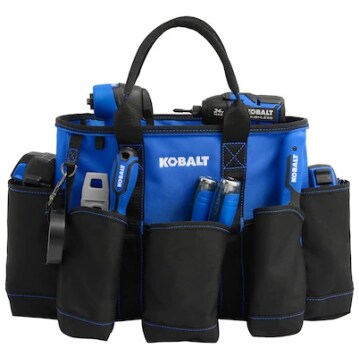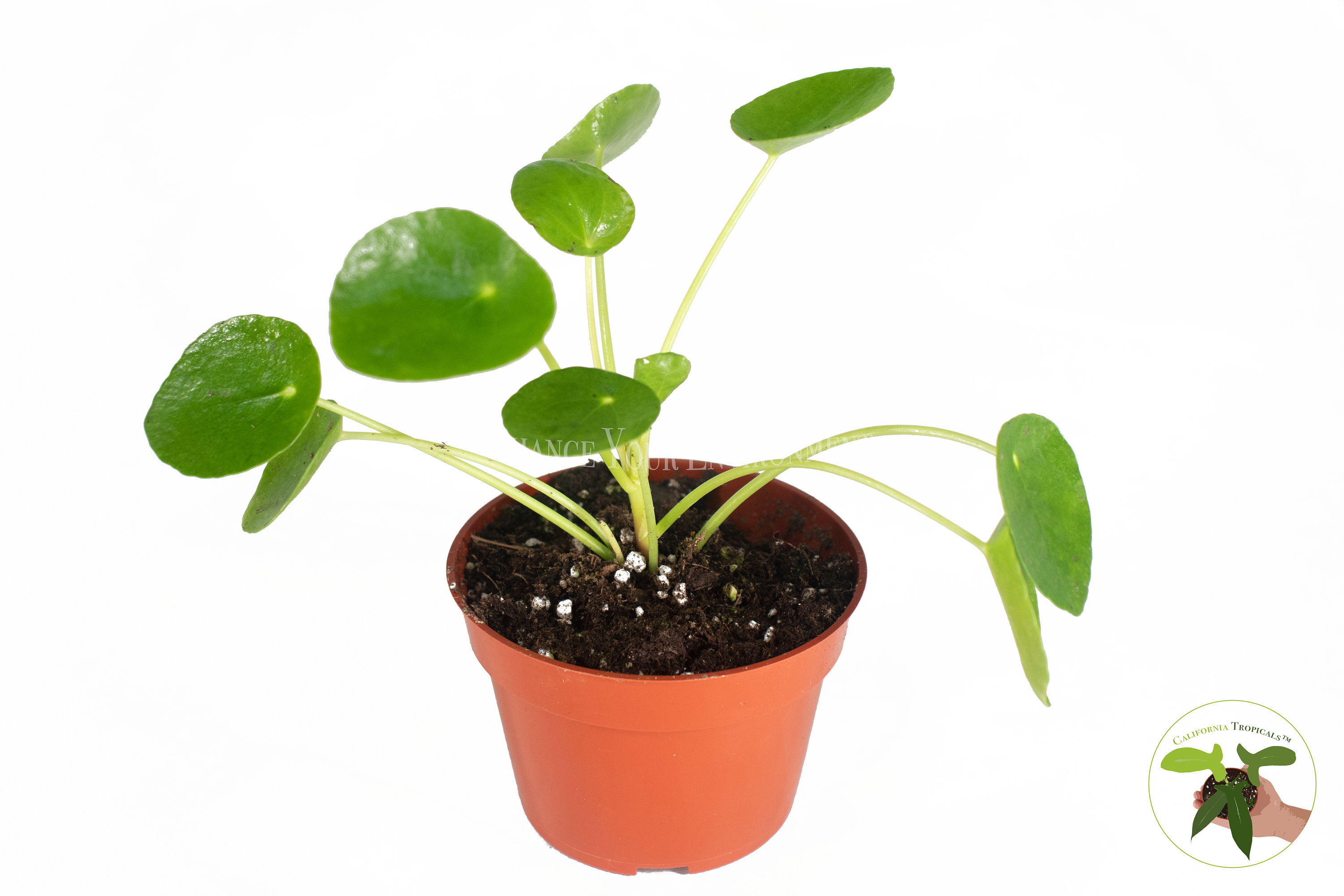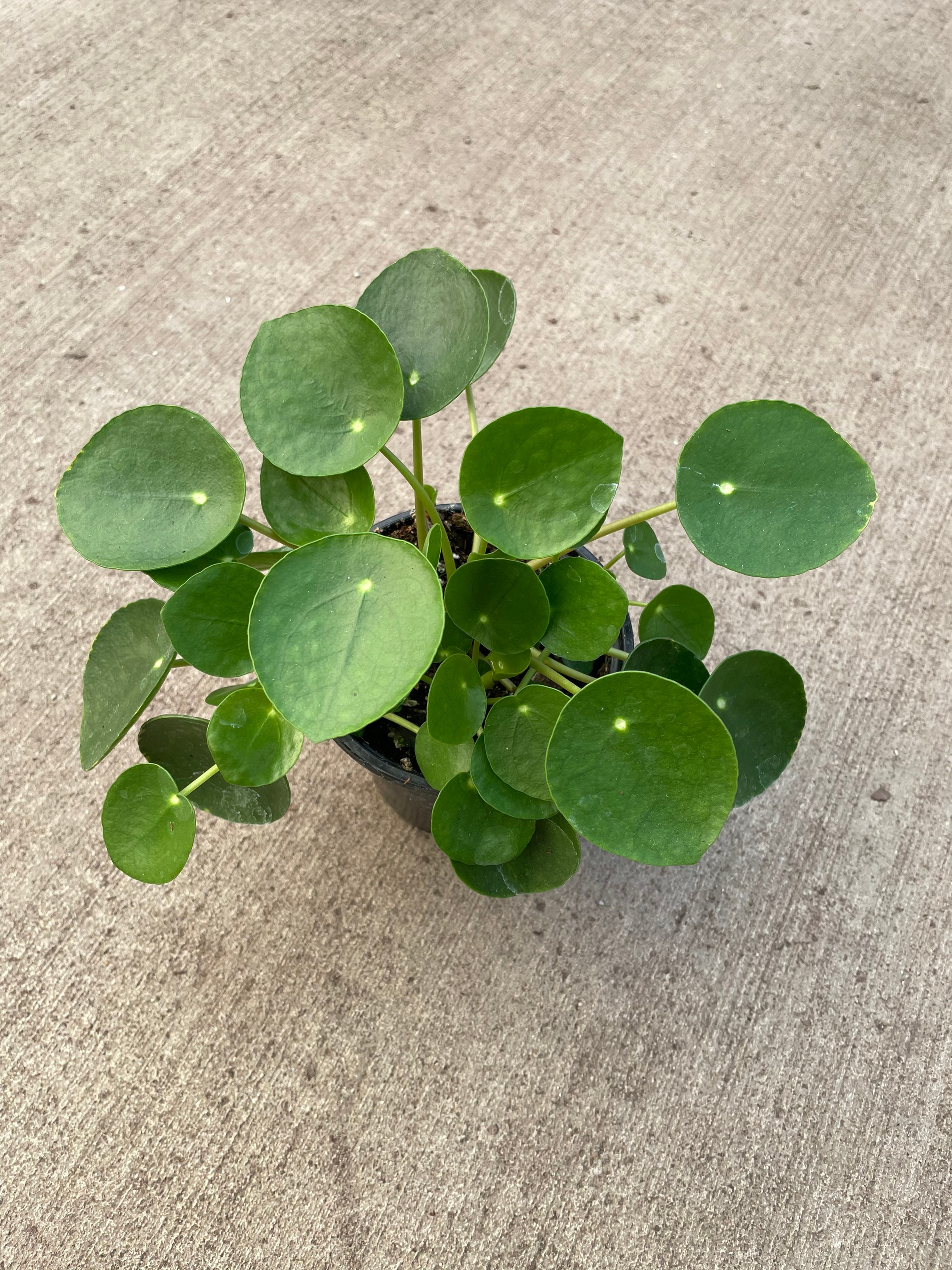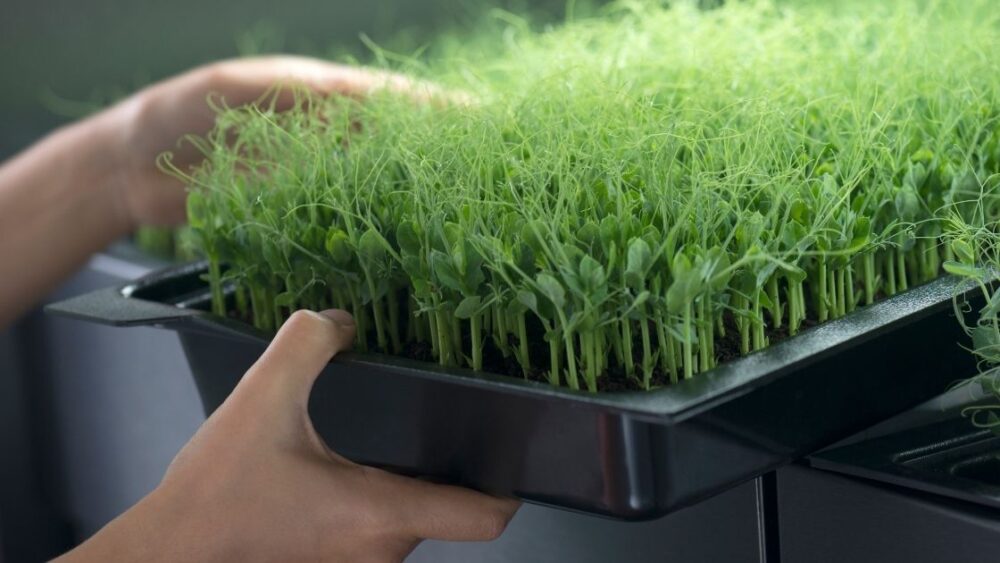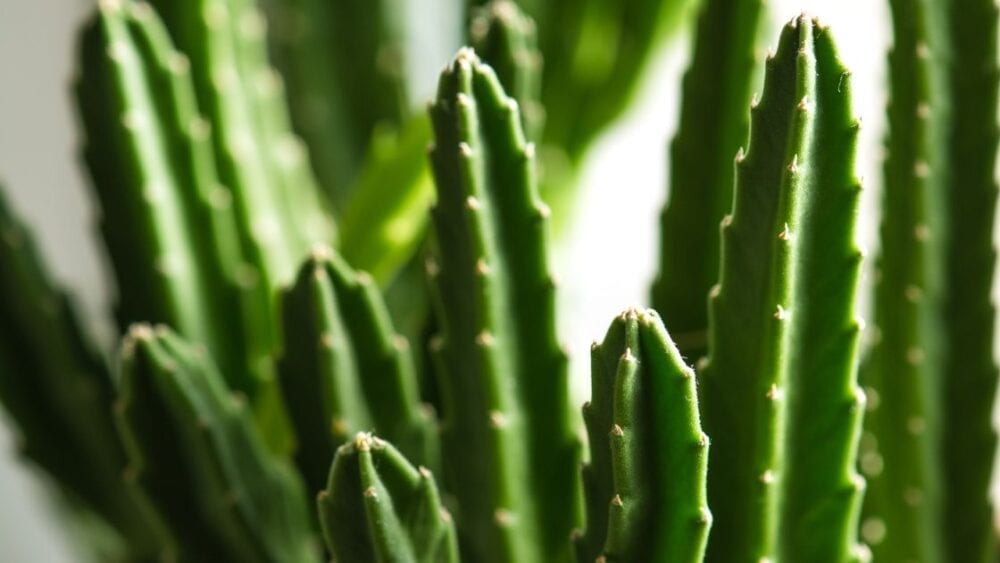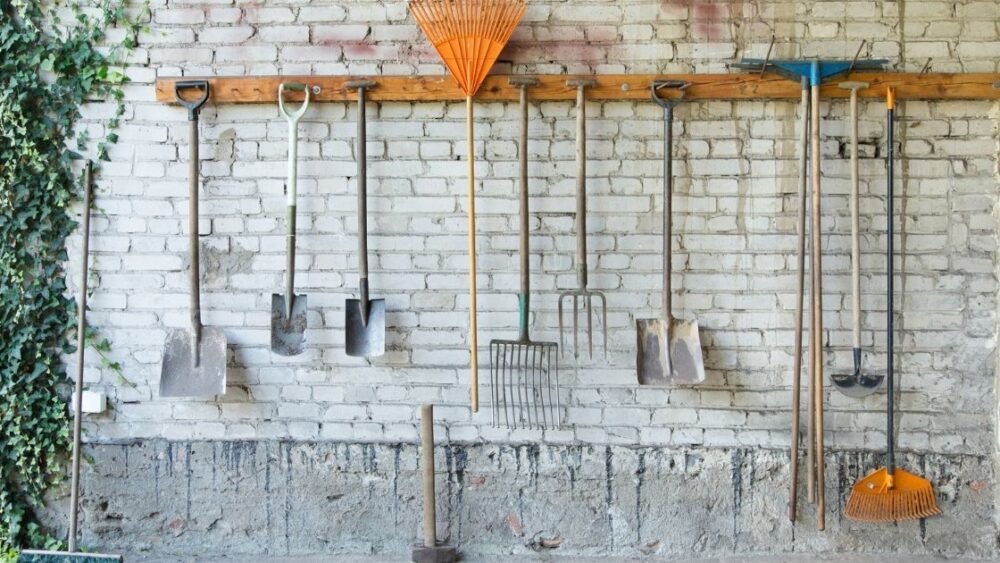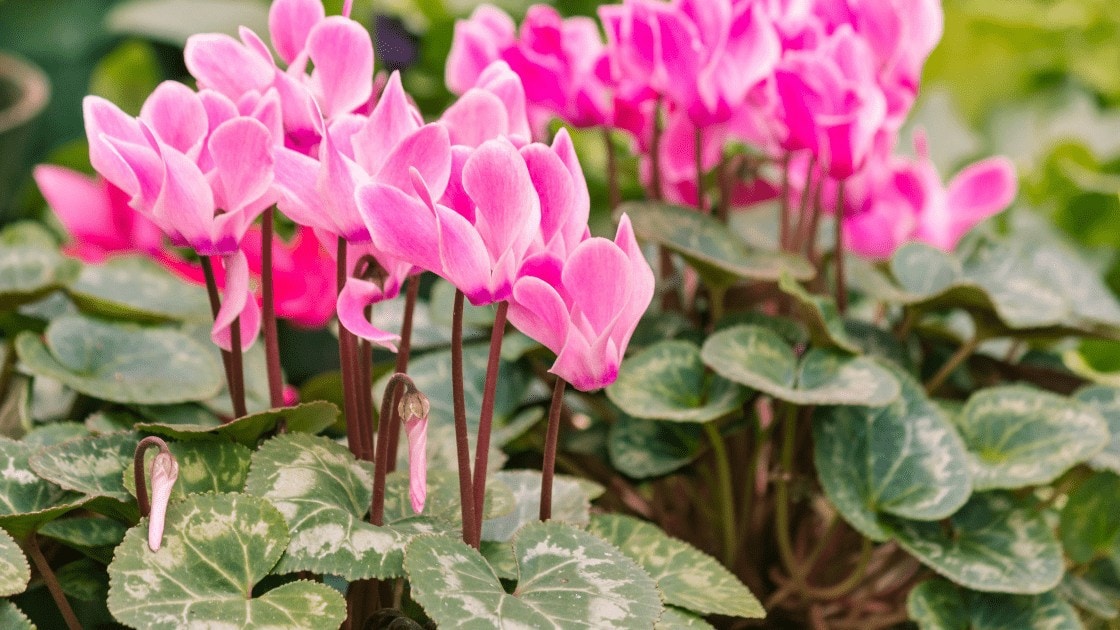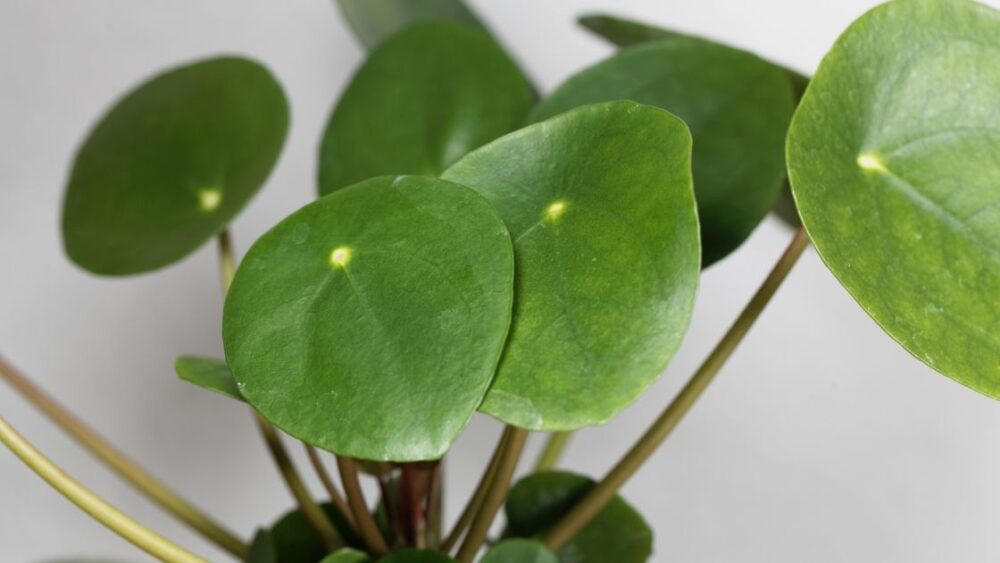
Pilea peperomioides (Chinese money plant) is one of the most commonly encountered indoor ornamental plants. This plant comes from Southern China, where the temperatures are steady throughout the year, with only a slight drop during the winter. Because of this, Pilea peperomioides is very suited to growing indoors. Drooping and wilting are not very common in this plant and are usually easy to fix – if you catch the problem early and diagnose it correctly, your plant will make full recovery in only a few weeks.
What Can Cause Pilea to Wilt?
In the absence of other symptoms, wilting on its own almost always points to root problems. Those can be very temporary (flooding of the soil and temporary root suffocation) or more serious (root and stem rot due to chronic overwatering).
In the presence of other symptoms accompanying the wilt, such as discoloration, tip browning and chlorosis (yellowing), the issue may stem from pest infestations, light problems, depleted soil or over-fertilization. Let’s explore all of those causes further and take a detailed look at how we can recognize them:
Browse our Affiliate Products
Wilting without any other symptoms
If the wilt is sudden and occurs shortly after watering, this points to root suffocation, due to drowning. The solution is to simply water less frequently, or repot the plant in soil that has better drainage (which usually means higher in perlite).
For more information on pot drainage, check out this article. Is One Drainage Hole Enough for Flower Pots? How Big Should It Be?
If the wilt is slowly worsening and occurs even in-between waterings, check the stem of the plant for rotting problems – excess moisture is the main cause of this and the solution is less frequent watering from the bottom of the pot.
Repotting is the best solution for persistent wilting, as well as for the beginning stages of stem rot. Clean up the root system from dead root hairs during the repot and use light misting or a humidity dome while the plant recovers from the repotting.
Wilting in combination with yellowing, leaf spots or other similar symptoms
This type of wilt has a lot of potential causes, depending on the exact symptoms. Here is a list to help you diagnose the issue:
Light deficiency:
Usually starts with paleness in the leaves – unlike the interveinal chlorosis in iron deficiency, the yellowing caused by lack of light is uniform throughout the whole leaf surface. This is a common cause of wilting because many people underestimate the amount of light this plant needs – it cannot survive in the corner of a living room for long, regardless of how bright it looks to the human eye. Move the plant closer to a window and full recovery should be quick, in less than a week.

Light stress:
Occurs when the plant is suddenly exposed to direct sunlight, without being gradually acclimated first. The leaves start to curl, yellow and the whole plant takes on an unhealthy, wilted appearance. Removing the stressor solves the problem quickly, but any leaf necrotic spots will be permanent.
Pests:
Can quickly lead to wilting, especially in combination with reduced light levels, further starving the plant of energy. The problem is diagnosed by a close inspection with a magnifying class. Pilea is prone to almost all commonly known insect pests – aphids, spider mites and gnats. Insect pests almost always cause spots on the leaves and stems – if those are absent, you can rule this cause out.
Fungal problems:
Present as white, spotty discoloration and browning. They usually lead to wilting and drooping only after the stem and roots start being affected. Repotting, washing the whole plant well and applying a fungicide are the best solutions.
Spent soil:
Can manifest as many types of deficiencies and can definitely progress to wilting and drooping. Usually, those symptoms develop after the plant becomes root-bound and the roots start coming out of the drain holes. Repotting solves the problem quickly, but applying a soluble fertilizer can also be a temporary solution.
Toxicities:
Can develop because of too frequent fertilizer applications and because of severe overwatering, which increases ammonia levels in the soil. The symptoms can be difficult to distinguish and repotting is the best solution. Long-term bottom watering can cause any salts present in the water to build up over time. A single top flush with copious amounts of water will solve the problem, but sometimes repotting will still be necessary.
What Can Cause Pilea to Droop?
Severe drooping is usually caused either by stem rot, or by overwatering. In both cases, it’s best to repot the plant and clean up the root system. Drooping can also occur because of simple dehydration or temporary heat stress. Light misting with a spray bottle fixes this type of droop quickly.
How to Fix Wilting and Drooping Problems in Pilea
Here is a general list of steps to take in order to solve the problem:
- First, make sure that you’re watering the plant correctly. Deep watering once every 5-7 days works best – watering daily can lead to root rot and wilting. If the plant is severely wilted, immediately mist it to prevent further dehydration of the tissues.
- Inspect the plant for leaf spots, which may point to deficiencies, pests or bacterial/fungal infestations. Decrease the humidity to stop mold and bacteria from spreading and start bottom watering to avoid wetting the stem too much, especially if it’s already browning and rotting.
- Repot. This is a good ‘umbrella’ solution that takes care of many problems at the same time. Make sure to use a good, well-draining soil. If the problem worsens after the repotting procedure, use a temporary humidity dome or mist gently for a few days until full recovery.
- Move the plant around. Light deficiency, proximity to space heaters and unfavorable drafts can all play a role in the problem. Simply moving the Pilea to a brighter spot may solve the issue quickly.
For more information and if your looking for Chinese money trees, click here. How to Care for a Pachira Aquatica “Variegata” (Money Tree) Houseplant
Optimum Growing Conditions for Pilea Peperomioides
Pilea peperomioides is easy to care for, as long as you give it enough indirect light and water it properly. This plant can take a lot of neglect.
How much sunlight does it need?
Strong, indirect sunlight is a must for proper growth. The plant can survive for a few weeks in a poorly-lit living room area, but if you don’t move it near a bright window, you’ll eventually run into problems. Light deficiency makes this plant much more prone to pests and all sorts of other issues.
What temperature is ideal?
Normal, room temperature of around 75F (23C) works best for this plant. It can deal with some heat during the summer without any problems. This plant is not frost tolerant and is also sensitive to sunburn – it’s best to grow it fully indoors.
Soil requirements
Rich, well-draining soils work best. Any type of general-purpose soil will work fine, especially if around 10% perlite is added for better drainage. The better the drainage, the more resistant Pilea will be to overwatering and rotting problems. additionally, if you want more information on soil, click on this article. What Are The BEST Potting Soils for Every Type of Plant?
How often should you water?
Pilea is moderately sensitive to overwatering, depending on the soil quality. Watering once a week is usually ideal and a brief drought period before each watering works best. Bottom watering works well for this plant and can be used to avoid wetting the stem too much and causing it to rot.
Potting size and repotting
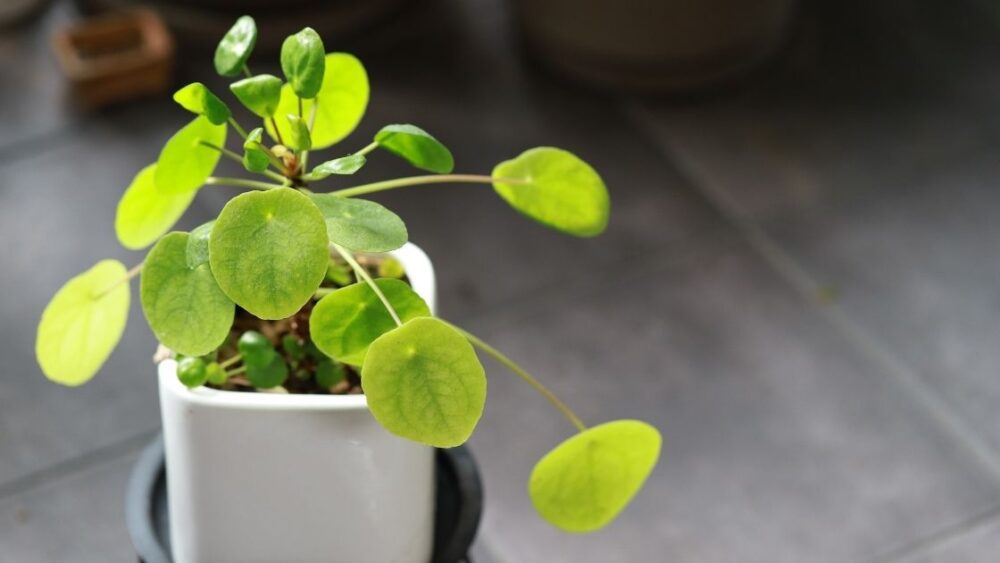
Pilea should be repotted once every two years, but only if it has outgrown the pot. This is a relatively small plant, reaching a maximum height and spread of around 13 inches, so frequent repotting is not necessary.
Can Pilea survive outdoors?
Pilea requires a proper acclimation period before it can deal with the direct sun. Otherwise, severe, irreversible leaf scorching will occur. For that reason, it’s recommended that this plant is placed outdoors only in full shade. It is not frost tolerant.
Final Thoughts
Wilting in Pilea usually comes down to general unfavorable growing conditions – frequent overwatering in combination with light deficiency are usually to blame. The solution to most wilting problems is repotting and giving the plant more indirect light, by moving it closer to a window.



